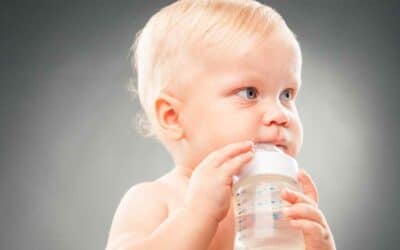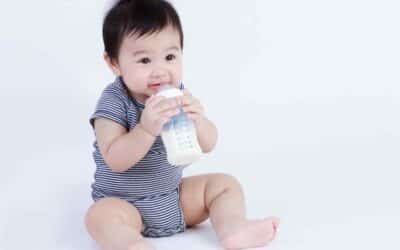Making the transition from breastfeeding or formula feeding to using a baby bottle can be quite a task, both for new parents and the little ones. It’s a process that requires patience, careful consideration, and the right tools. Among these tools, the baby bottle takes center stage. As 2023 has introduced a variety of innovative, safe, and functional baby bottles, it’s crucial to choose the one that best suits your baby’s needs.
In this article, we will guide you through this essential phase. We will provide insights into the most popular, high-rated, and technologically advanced baby bottles for breastfed babies on the market in 2023. Our focus will be on their features, safety standards, ease of use, and how they can help facilitate a seamless transition for your child.
Whether you’re a new parent, expecting, or just looking to upgrade your baby’s feeding experience, this roundup of the top baby bottles in 2023 is your comprehensive guide. So, let’s embark on this journey together to ensure your child gets the best feeding experience, promoting their health, comfort, and happiness.

When Should I start my Breastfed Baby on a Bottle?
Navigating the world of parenthood can be quite the rollercoaster, especially when it comes to feeding your little one. You’re not alone if you’re breastfeeding and wondering when to introduce your baby to bottle feeding. Choosing the right baby bottle and the appropriate start time can significantly impact your baby’s comfort and feeding routine.
Timing is everything when it comes to introducing bottles for breastfed babies. A common recommendation is to wait until breastfeeding is well-established, typically around 3-4 weeks old. This helps prevent nipple confusion, which can occur if a bottle is introduced too early.
Now, onto the selection of baby bottles. There’s a wide variety of options, including glass bottles and plastic baby bottles. Glass bottles are an excellent choice if you prefer a more eco-friendly, durable, and chemical-free option. They are easy to clean and can be sterilized without worrying about the release of harmful chemicals. However, they can be heavier and more fragile than their plastic counterparts.
Plastic bottles, on the other hand, are lightweight, unbreakable, and generally less expensive. However, they may need to be replaced more often as they can develop scratches over time.
Regardless of the bottle material, the bottle shape and nipple design are crucial factors to consider for breastfed babies. Glass bottles with a wide base and a slow-flow nipple can mimic the natural breastfeeding experience, reducing the potential for nipple confusion.
The best baby bottles also come with features that reduce colic, such as vent systems to decrease air intake. It’s always a good idea to try a few different types to see what works best for your baby.
Don’t forget about the bottle brush! It’s an essential tool for cleaning those narrow spaces and ensuring that your baby’s bottles are hygienic and ready for the next use.
Once you’ve decided on the best baby bottle, it’s time to pack it in your diaper bag along with your other essentials. Having a bottle on hand can offer flexibility for feeding on the go, allowing others to feed your baby, and providing a helpful backup for times when direct breastfeeding isn’t possible.
Remember, transitioning from breast to bottle is a journey that requires patience and flexibility. Not all babies will take to a bottle right away, and that’s okay. It can be helpful to have someone other than the mother introduce the first few bottle feedings, as babies often associate their mothers with breastfeeding.
Choosing the best glass baby bottles is a personal decision that depends on your baby’s preferences, your lifestyle, and your values. Whether you choose glass bottles or plastic bottles, the key is to find a bottle that your baby accepts and that makes feeding a comfortable, enjoyable experience for both of you.

What to Look for In a Baby Bottle
In our previous column, we discussed the importance of timing when introducing breastfed babies to baby bottles. Now that you have an idea of when to start, let’s delve into the crucial aspects to consider when selecting the perfect baby bottle for your little one.
Nipple Design
The nipple design plays a significant role in making the transition from breast to bottle smooth for breastfed babies. Choose a slow-flow nipple that mimics the natural breastfeeding experience, with a shape that closely resembles the mother’s nipple. This design helps maintain the baby’s latch and minimizes the risk of nipple confusion.
Venting System
A good venting system reduces colic and gas in babies. Look for baby bottles with an efficient venting system that minimizes air intake during feeding. This feature is particularly helpful for babies with sensitive tummies and those prone to colic or reflux.
Appropriate Baby Bottle Sizes
Baby bottles come in various sizes to cater to your baby’s growth stages. Start with smaller bottles (4-5 ounces) for newborns and younger infants, and transition to larger bottles (8-9 ounces) as your baby’s appetite increases [1]. Having a few different sizes in your diaper bag ensures you’re always prepared for feeding on the go.
Easy to Wash
Cleanliness is crucial when it comes to baby bottles. Opt for bottles with a wide neck and minimal parts, making them easier to clean with a bottle brush. Glass baby bottles are generally easier to clean than plastic baby bottles, as they are less prone to staining and scratching. Keep in mind that ease of cleaning can contribute to maintaining proper hygiene for your little one.
Pumping Compatible
For breastfeeding moms who pump, it’s essential to choose bottles that are compatible with your breast pump. This compatibility allows you to pump directly into the bottle, reducing the need to transfer breast milk between containers and decreasing the risk of spillage and contamination.
Both glass bottles and plastic bottles have their pros and cons, so it’s crucial to consider your priorities when choosing the best baby bottles. Glass baby bottles are an eco-friendly, durable, and chemical-free option, while plastic baby bottles are lightweight, unbreakable, and often more affordable.
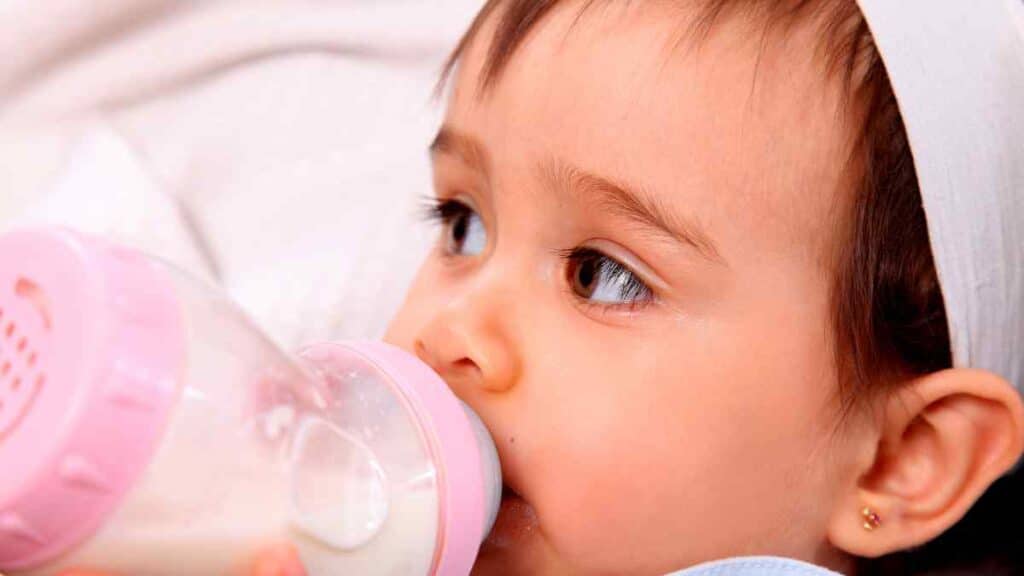
What Nipple Flow is Best for a Breastfed Baby?
Having explored the essential factors to consider when choosing a baby bottle in our previous column, let’s delve into one of the most critical aspects for breastfed babies: nipple flow. Selecting the right nipple flow ensures your baby has a comfortable and efficient feeding experience, making the transition from breast to bottle as seamless as possible.
For breastfed babies, slow-flow nipples are the ideal choice. These nipples closely mimic the natural pace of breastfeeding, allowing the baby to take their time and develop a comfortable feeding rhythm. Slow-flow nipples also help prevent overfeeding and reduce the risk of nipple confusion, as they encourage the baby to use the same suckling motion as they would when breastfeeding.
When choosing baby bottles, look for BPA-free plastic or glass bottles that offer soft silicone nipples, which can provide a more natural feel for your baby. It’s essential to consider the nipple shape as well. Some of the best bottles for breastfed babies feature a wide, breast-like nipple shape that promotes proper latch and simulates the breastfeeding experience.
It’s important to monitor your baby’s feeding patterns and be prepared to adjust the nipple flow as needed. As your baby grows and develops, it may require a faster flow to meet its increasing appetite. Keep an eye out for signs that your baby may be ready to move to a medium-flow or fast-flow nipple, such as frustration during feeding or increased sucking efforts.
Some popular brands, like Tommee Tippee, offer a range of nipple flows specifically designed for different stages of your baby’s growth. These options can be particularly helpful for parents who are exclusively bottle feeding or alternating between breastfeeding and bottle feeding.

The Best Baby Bottles of 2023
As parents embark on the journey of bottle feeding, finding the perfect baby bottle is essential for ensuring a smooth and comfortable experience. With a myriad of options available in 2023, we have narrowed down the top five baby bottles that cater to a range of needs and preferences. Here’s a rundown of the best baby bottles of 2023.
MAM Easy Start Anti-Colic Baby Bottle
These bottles are specifically designed to reduce colic and gas in babies, thanks to their innovative anti-colic vents. The soft silicone, flat-shaped nipple closely mimics the mother’s breast, making them an excellent choice for breastfed babies transitioning to bottle feeding. MAM’s BPA-free plastic bottles also feature a self-sterilizing design for easy cleaning and sterilization.
Tommee Tippee Advanced Anti-Colic Newborn Baby Bottle Feeding Gift Set
Tommee Tippee’s gift set includes everything you need for a stress-free feeding experience. The bottles come with advanced anti-colic vents that minimize air bubbles, reducing colic symptoms in babies. The wide, breast-like nipple shape is ideal for breastfed babies, promoting a natural latch and easing the transition from breast to bottle.
Philips Avent Newborn Bottle
Philips Avent bottles are known for their wide neck design, which makes them easy to clean and fill. The soft silicone bottle nipples have a unique petal design that prevents nipple collapse and allows for a more natural feeding experience. These bottles also come with an anti-colic valve to reduce gas and discomfort in babies.
Comotomo Baby Bottle
Often considered the best baby bottle for formula, Comotomo bottles boast a soft, skin-like texture that provides a comfortable grip for both parents and babies. The wide neck design ensures easy cleaning, while the dual anti-colic vents prevent air intake, reducing gas and colic. The natural nipple shape is also designed to mimic breastfeeding, making it an excellent choice for breastfed babies.
NUK Simply Natural Baby Bottles
NUK’s Simply Natural bottles feature a unique nipple shape with multiple feeding holes, simulating the flow of breast milk for a more natural feeding experience. The bottles are made from BPA-free plastic and come with an anti-colic vent system to minimize air ingestion. NUK’s nature bottles are designed to closely resemble breastfeeding, making them a popular choice among parents of breastfed babies.

Finding the Perfect Nipple Size
As we highlighted the best baby bottles of 2023, let’s delve into one of the most crucial aspects of bottle feeding: finding the perfect nipple size for your baby. The right nipple size ensures a comfortable, efficient, and enjoyable feeding experience for both you and your little one.
Age-appropriate nipple size
Nipple sizes are typically designed to match your baby’s age and feeding stage. Newborns and younger infants generally require slow-flow nipples, while older babies may need medium- or fast-flow nipples as they grow and develop. Be sure to check the manufacturer’s recommendations for age-appropriate nipple sizes.
Baby’s feeding style
Observe your baby’s feeding style to help determine the most suitable nipple size. If your baby gulps milk too quickly and appears to be struggling with a fast flow, a slower-flow nipple may be more appropriate. Conversely, if your baby seems frustrated and requires more effort to suckle, it may need a faster-flow nipple to meet its growing appetite.
Material and shape
Bottle nipples are commonly made from silicone or latex. Silicone nipples are firmer, longer-lasting, and dishwasher-safe, while latex nipples are softer and more flexible but may wear out more quickly. The shape of the nipple is also crucial, with some nipples designed to closely mimic the mother’s breast, like the Comotomo baby bottle and Dr. Brown’s bottles. These are ideal for breastfed babies transitioning to bottle feeding.
Compatibility with the baby bottle
Ensure that the nipple size is compatible with the baby bottle you have chosen. While some nipples are interchangeable between different bottle brands, it’s always best to check compatibility to avoid leakage and ensure a secure fit.
Venting system
Some bottle nipples have built-in venting systems to minimize air bubbles and reduce colic symptoms. When selecting a nipple size, consider whether an integrated venting system is important to you and your baby’s comfort during feeding.
Ease of cleaning
Wide-neck bottle nipples are generally easier to clean, as they provide more access for thorough washing. However, narrow-neck nipples may be more suitable for some bottle designs. Be sure to choose a nipple size that you can easily clean and maintain to ensure proper hygiene for your baby’s milk.
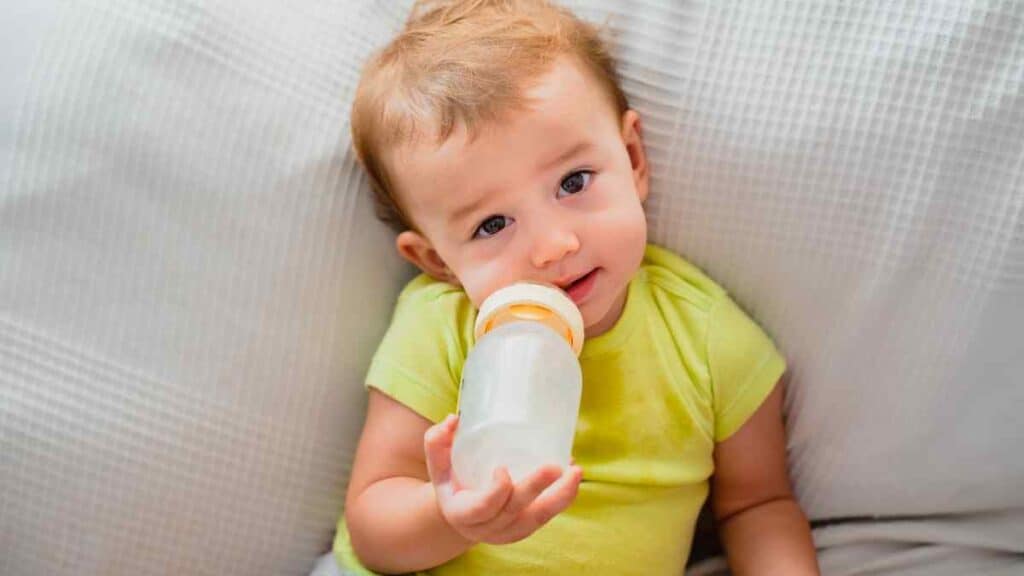
What’s Worth Considering
After examining the best baby bottles of 2023 in our previous column, you may still wonder what factors to consider when purchasing the perfect baby bottle for your little one. With a wide array of options available, weighing the features that matter most to you and your baby is essential. In this column, we’ll discuss the key factors to keep in mind when choosing the right baby bottle.
Material
Baby bottles are primarily made from glass or plastic, with silicone bottles gaining popularity as well. Glass baby bottles are eco-friendly, chemical-free, and easy to clean, while plastic bottles are lightweight and often more affordable. Silicone bottles offer the best of both worlds: they are lightweight, unbreakable, and chemical-free. Consider your priorities when selecting the material for your baby’s bottle.
Nipple material and shape
Bottle nipples are typically made of silicone or latex. Silicone nipples are firm, long-lasting, and dishwasher safe, whereas latex nipples are softer and more flexible but may wear out faster. The nipple shape is crucial, especially for breastfed babies. Look for a nipple that closely mimics the mother’s breast, such as those found in the best bottles for breastfed babies, to ensure a smooth transition.
Bottle shape and size
Baby bottles come in various shapes and sizes, with some designed to be more ergonomic and easy to hold. Consider the size of the bottle that best suits your baby’s age and feeding stage and whether you prefer a standard, wide neck, or angled design.
Venting system
A proper venting system can minimize air intake during feeding, reducing colic and gas in babies. Some bottles have built-in venting systems, while others require separate venting components. Consider your baby’s comfort and needs when selecting a bottle with a suitable venting system.
Ease of cleaning
Look for bottles that are easy to clean and maintain. Wide neck bottles are generally simpler to clean, providing more access for thorough washing. Some bottles also come with silicone sleeves for added grip and protection, which can make cleaning a breeze.
Compatibility with baby gear
If you’re a breastfeeding mom who pumps, ensure that the baby bottle you choose is compatible with your breast pump. This compatibility allows you to pump directly into the bottle, reducing the need to transfer milk between containers and minimizing the risk of spillage and contamination. Also, consider whether the bottle fits well with your existing baby gear, such as bottle warmers and sterilizers.
Milk flow
The bottle nipple should offer an appropriate flow for your baby’s age and feeding stage. Slow-flow nipples are suitable for newborns and younger infants, while medium or fast-flow nipples cater to older babies with growing appetites. Be sure to monitor your baby’s feeding patterns and adjust the nipple flow as needed.

Do I Need a Baby Bottle Warmer?
As new parents navigate the world of baby gear, one question often arises: do I need a baby bottle warmer? Bottle warmers are designed to heat baby bottles evenly and efficiently, providing a convenient solution for parents who want to serve their baby’s milk at the perfect temperature. In this column, we’ll explore the benefits of using a bottle warmer and help you determine if it’s the right investment for your family.
Baby bottle warmers offer several advantages that can make life easier for busy parents. Some of the key benefits include:
- Consistent heating: Bottle warmers heat milk evenly, reducing the risk of hot spots that can occur when using a microwave or hot water. This ensures that the milk is at a safe and comfortable temperature for your baby to drink.
- Time-saving: Bottle warmers can quickly heat baby bottles, making them especially useful for nighttime feedings or when you’re pressed for time.
- Versatility: Many bottle warmers are compatible with a wide range of baby bottles, including popular baby bottles like Tommee Tippee, Comotomo bottles, and the best bottles for breastfed babies. This means you can use your bottle warmer with any BPA-free bottle, regardless of material, size, or shape.
- Preservation of nutrients: Heating breast milk or formula at a consistent, gentle temperature helps preserve its nutrients, ensuring your baby receives the full benefits of its meal.
While a bottle warmer can be a convenient addition to your baby gear, it’s essential to consider whether it suits your family’s needs and lifestyle. Ask yourself the following questions:
- How often do you use baby bottles? If you frequently use baby bottles, especially for nighttime feedings, a bottle warmer might be a worthwhile investment.
- Do you have access to hot water or a microwave? If you’re comfortable using alternative methods to heat your baby’s milk and can ensure the milk is heated evenly, a bottle warmer may not be necessary.
- Is convenience a priority for you? If you value the time-saving benefits and convenience a bottle warmer provides, it could be a useful addition to your baby gear.
- Are you primarily breastfeeding or using formula? While a bottle warmer can be helpful for both breastfed and formula-fed babies, it may be especially useful for parents who use formula frequently, as the milk often needs to be warmed before feeding.

What Size of Baby Bottle do I Need?
Now that you have a better understanding of whether a bottle warmer is right for your family, it’s essential to consider another crucial aspect of bottle feeding: choosing the appropriate size of baby bottles. With various sizes available, it might be challenging to determine which bottle size best suits your baby’s needs. In this column, we’ll guide you through the process of selecting the perfect baby bottle size for your little one.
Age and feeding stage
The size of the baby bottle should align with your baby’s age and feeding stage. Newborn babies generally require smaller bottles, around 4 ounces, as their tummies can only handle small amounts of milk at a time. As your baby grows and consumes more milk, you may need to transition to larger bottles, typically 8 to 9 ounces.
Feeding frequency
The frequency of your baby’s feedings can also influence the ideal bottle size. If your baby feeds more frequently with smaller amounts, a smaller bottle may be more suitable. On the other hand, if your baby consumes larger quantities of milk less frequently, a bigger bottle might be more appropriate.
Breastfed or formula-fed
For breastfed babies, smaller bottles may be more fitting, as breast milk is often richer and more filling than formula. Additionally, smaller bottles can help ensure that the expressed breast milk is not wasted. Formula-fed babies might require larger bottles, as they tend to consume more substantial amounts of milk at each feeding.
Compatibility with nipples and accessories
When choosing a bottle size, consider the compatibility of the bottle with different nipple sizes, as well as accessories like silicone sleeves or anti-colic venting systems. Some bottles, such as Comotomo bottles and other best bottles for breastfed babies, offer a range of compatible nipple sizes to accommodate your baby’s growth and changing feeding habits.
Ease of use and cleaning
Smaller bottles may be more comfortable for your baby to hold and easier for you to clean, especially when using a dishwasher. However, larger bottles might offer greater convenience for parents who prefer to prepare multiple feedings in advance.
Storage and portability
Consider your storage and portability needs when selecting a baby bottle size. Smaller bottles can be more compact and easier to fit into diaper bags or bottle holders, while larger bottles may require additional storage space.
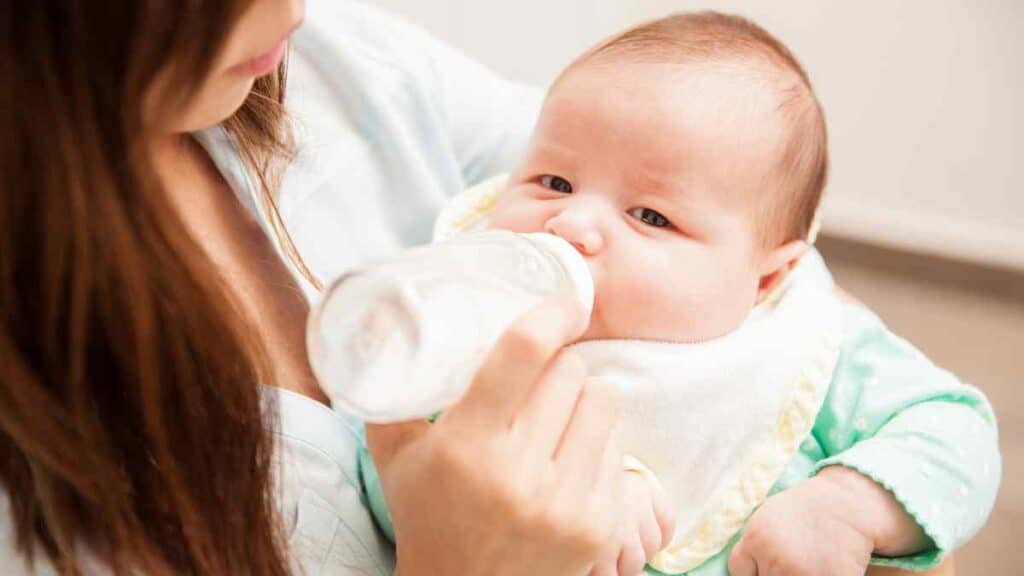
Conclusion
In conclusion, finding the perfect baby bottle plays a crucial role in ensuring a smooth and stress-free feeding experience for both you and your little one. The top baby bottles in 2023 offer a range of options to cater to different needs, preferences, and lifestyles. From preserving the nutritional quality of breast milk to providing a safe and comfortable glass bottle, these best baby bottles are designed to make the transition from breast to bottle as seamless as possible for your breastfed baby.
With features like soft silicone nipples that closely mimic a mother’s breast, easy-to-clean dishwasher-safe components, and materials that safeguard your baby’s milk from contaminants, you can confidently choose the best baby bottle for your family. By carefully considering the various factors we’ve discussed throughout this article, you’ll be well-equipped to select the ideal bottle that not only meets your baby’s unique needs but also makes feeding time a truly enjoyable experience.
Did you find this article helpful? We’d love to hear from you! Have a question? Let us know in the comments.

